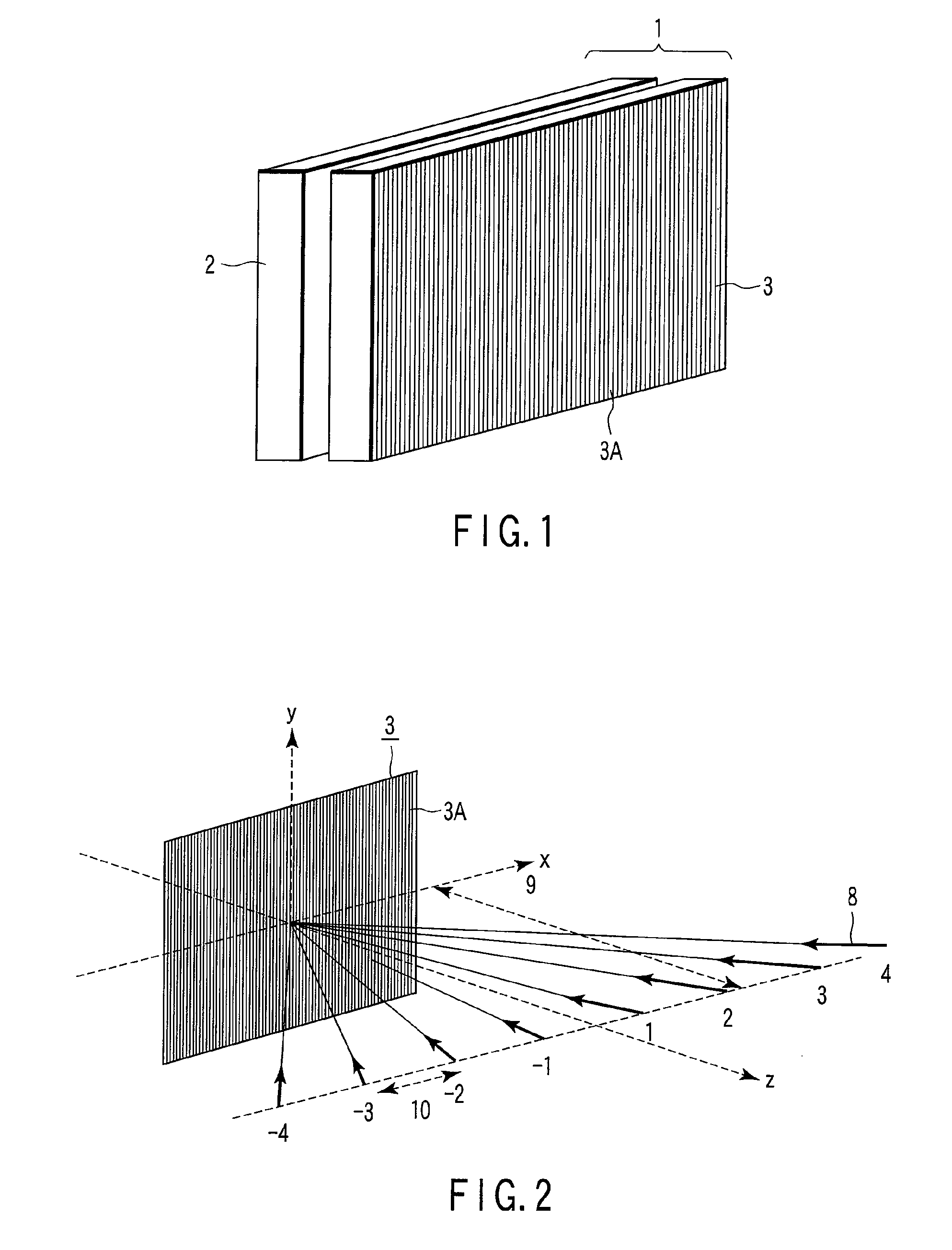Apparatus and method of displaying the three-dimensional image
a three-dimensional image and display apparatus technology, applied in the direction of optics, electrical apparatus, instruments, etc., can solve the problems of reducing the resolution of the three-dimensional image, increasing the lens pitch, and incomplete movement parallaxes
- Summary
- Abstract
- Description
- Claims
- Application Information
AI Technical Summary
Benefits of technology
Problems solved by technology
Method used
Image
Examples
embodiment 1
The Vertical Lens in Accordance with the 1D-II Scheme Depending on the Display Position
[0113]Description will be given of a case in which PT=0 (vertical lens 3A) and the number of parallaxes is 12. The observation distance was set at 700 mm. Even with the 12 parallaxes, the number of multi-lens cameras required to provide one screen is 22 in order to maximize the viewing area width at the observation distance of 700 mm. Detailed descriptions are omitted here. With this three-dimensional image display apparatus, when the spatial frequency of the model to be displayed is 320 cpr, the front display limit (Dn) and the rear display limit (Df) are only 23.7 mm and 25.4 mm, respectively. It has been found that with this three-dimensional image display apparatus, 2 sub-pixels (C=2) are observed, on average, via one lens 3A at the viewing distance. In this case, the amount of cross talk (C′) on the screen is 3 as shown in FIG. 4C. For those of the models displayed on the three-dimensional im...
embodiment 2
[0115]A three-dimensional image display apparatus in Embodiment 2 was the same as that in Embodiment 1 except that the cross talk amount C was 1. Possible multiplication was successfully prevented on the basis of the following determinative equation.
z_m>Dn or z_m
embodiment 3
The Oblique Lens in Accordance with the 1D-II Scheme Depending on the Rendering Speed
[0116]Description will be given of a case in which PT=4 (vertical lens 3A) and the number of parallaxes was 16. The observation distance was set at 700 mm. Even with the 16 parallaxes, the number of multi-lens cameras required to provide one screen is 30 in order to maximize the viewing area width at the observation distance of 700 mm. Detailed descriptions are omitted here. The three-dimensional image display apparatus was used to perform real-time rendering so as to change the display in response to the observer's operation. Every time CG models created using a DirectX base are manipulated, the 30 cameras generate respective multi-eye-point images. Appropriate software then executes a rearranging process on the images in sub-pixel units to generate element images. The element images are displayed on the two-dimensional image display device to allow a three-dimensional image to be viewed via the le...
PUM
 Login to View More
Login to View More Abstract
Description
Claims
Application Information
 Login to View More
Login to View More - R&D
- Intellectual Property
- Life Sciences
- Materials
- Tech Scout
- Unparalleled Data Quality
- Higher Quality Content
- 60% Fewer Hallucinations
Browse by: Latest US Patents, China's latest patents, Technical Efficacy Thesaurus, Application Domain, Technology Topic, Popular Technical Reports.
© 2025 PatSnap. All rights reserved.Legal|Privacy policy|Modern Slavery Act Transparency Statement|Sitemap|About US| Contact US: help@patsnap.com



